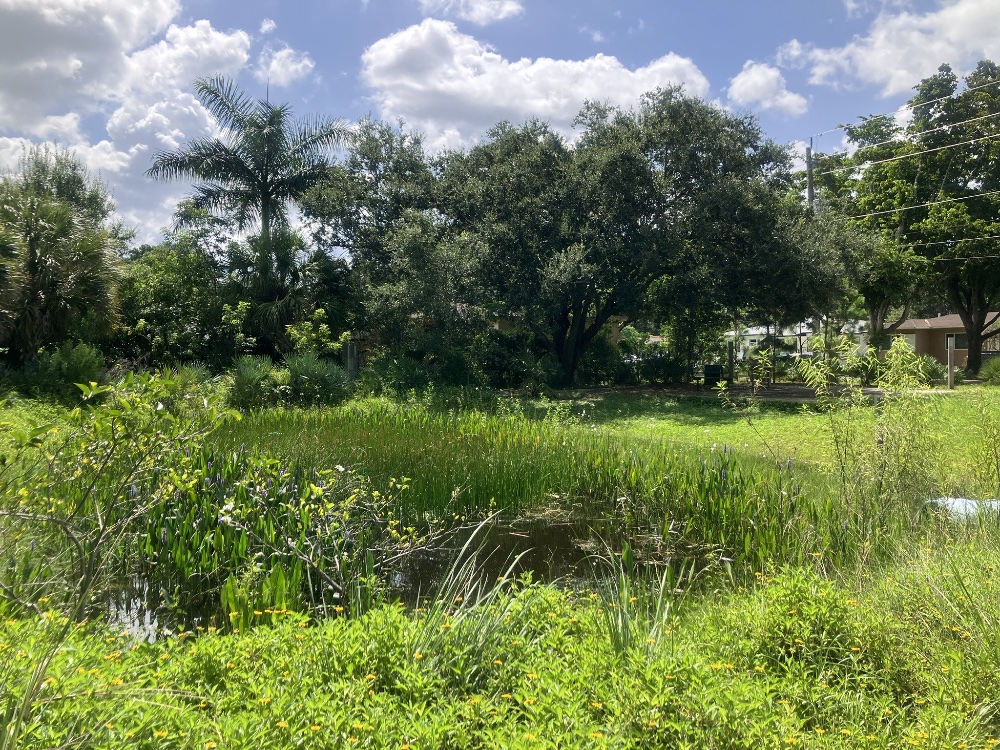
Stormwater Swales capture, convey and treat stormwater runoff.
Written by Adriana Lopez, Miami Waterkeeper
South Florida is no stranger to rainfall, receiving 60 inches of rain annually. Historically, our natural landscape relied on vast wetlands to capture rainwater, but urbanization replaced wetlands with hard surfaces – pavements, roads, buildings, compacted soil – that diminish the earth’s natural capacity to absorb rain. As a result, South Florida requires a vast network of engineering controls to ensure dangerous flooding does not overtake our communities. However, stormwater now moves much faster across the land than in pre-development times, picking up pollution and debris and depositing these toxins into waterways. Stormwater pollution is one of the largest sources of water quality degradation in Florida, and effective stormwater management is critical to the health of our ecosystems and residents.
Stormwater management features include drains, pipes, filters, catch basins, ditches, swales, and culverts that detain stormwater and remove pollutants. Regulatory oversight exists to manage the quantity and quality of stormwater, but Miami-Dade County’s outdated and decaying infrastructure needs significant updates to effectively reduce devastating pollution in Biscayne Bay. In 2022, Miami Waterkeeper conducted a landscape analysis of stormwater management across the county and found widespread non-compliance and limited enforcement – the Stormwater Permit Compliance Report Card summarized such findings and provided recommendations to achieve higher water quality standards, more effectively enforce requirements, and incentivize compliance across municipalities.
As climate change and sea level rise introduce new and troubling uncertainties, the future of stormwater management must shift from traditional hardscapes to approaches that mimic natural hydrological processes. Low Impact Design (LID) and green infrastructure (GI) utilize permeable surfaces and natural features to store, infiltrate, and reduce stormwater flows to sewer systems and waterways. LID and GI reduce flooding while also improving air quality, reducing air temperatures, providing shade, and beautifying neighborhoods.
When enjoying the Commodore Trail, if you see issues with storm drains, submit a complaint with the county here. Additionally, flag potential green infrastructure opportunities on the Trail via the Community Input Tool of Miami Waterkeeper’s Green Infrastructure Accelerator Project so we can continue improving our historic path.

